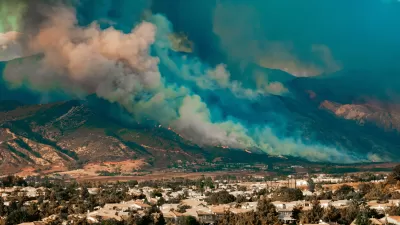A new global platform will help the world identify and encourage opportunities for more proximity in the built environment—development patterns that can help reduce sources of greenhouse gas emissions and other forms of pollution if built well.

A new platform, the Global Observatory of Sustainable Proximities, was launched during the Second United Nations Habitat Assembly earlier this week. The platform “will serve as a go-to knowledge and capacity building platform collecting information about local initiatives while supporting and promoting urban proximities at a global scale,” according to a press release announcing the launch.
“Together, the Observatory partners will develop a globally applicable concept based on proximity, official measures and indicators, a global centre for knowledge sharing and capacity building, and a global network to support cities in implementation,” explains the press release.
In the ensuing days since the press release was published, the East Coast of the United States was smothered by wildfire smoke drifting down from ongoing wildfires to the north in Canada, sending a palpable signal of the terrible damages of climate change to a heavily populated and relatively wealthy region. The development proximity sought by the new platform has been repeatedly shown to reduce causes of greenhouse gas emissions, and the United Nations has repeatedly called on the United States to transform its land use and transportation practices to help slow rising greenhouse gas emissions around the world. More proximity in development patterns would also prevent sprawl on the wildland-urban interface, which introduces various environmental risks and provides fuel for wildfires.
The platform was launched by four founding partners: the Entrepreneurship, Technology and Innovation Chair of the IAE Paris Sorbonne Business School (Chaire ETI), C40 Cities, United Cities and Local Governments (UCLG) and the United Nations Human Settlements Programme (UN-Habitat).
FULL STORY: Global platform launched to support ‘proximity’ in urban planning

Alabama: Trump Terminates Settlements for Black Communities Harmed By Raw Sewage
Trump deemed the landmark civil rights agreement “illegal DEI and environmental justice policy.”

Planetizen Federal Action Tracker
A weekly monitor of how Trump’s orders and actions are impacting planners and planning in America.

The 120 Year Old Tiny Home Villages That Sheltered San Francisco’s Earthquake Refugees
More than a century ago, San Francisco mobilized to house thousands of residents displaced by the 1906 earthquake. Could their strategy offer a model for the present?

In Both Crashes and Crime, Public Transportation is Far Safer than Driving
Contrary to popular assumptions, public transportation has far lower crash and crime rates than automobile travel. For safer communities, improve and encourage transit travel.

Report: Zoning Reforms Should Complement Nashville’s Ambitious Transit Plan
Without reform, restrictive zoning codes will limit the impact of the city’s planned transit expansion and could exclude some of the residents who depend on transit the most.

Judge Orders Release of Frozen IRA, IIJA Funding
The decision is a victory for environmental groups who charged that freezing funds for critical infrastructure and disaster response programs caused “real and irreparable harm” to communities.
Urban Design for Planners 1: Software Tools
This six-course series explores essential urban design concepts using open source software and equips planners with the tools they need to participate fully in the urban design process.
Planning for Universal Design
Learn the tools for implementing Universal Design in planning regulations.
Clanton & Associates, Inc.
Jessamine County Fiscal Court
Institute for Housing and Urban Development Studies (IHS)
City of Grandview
Harvard GSD Executive Education
Toledo-Lucas County Plan Commissions
Salt Lake City
NYU Wagner Graduate School of Public Service





























